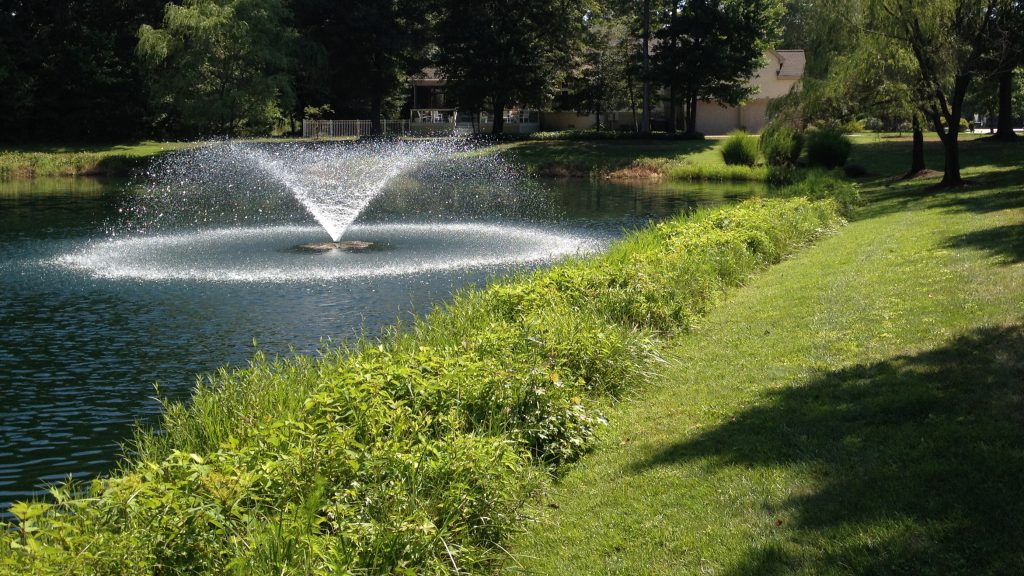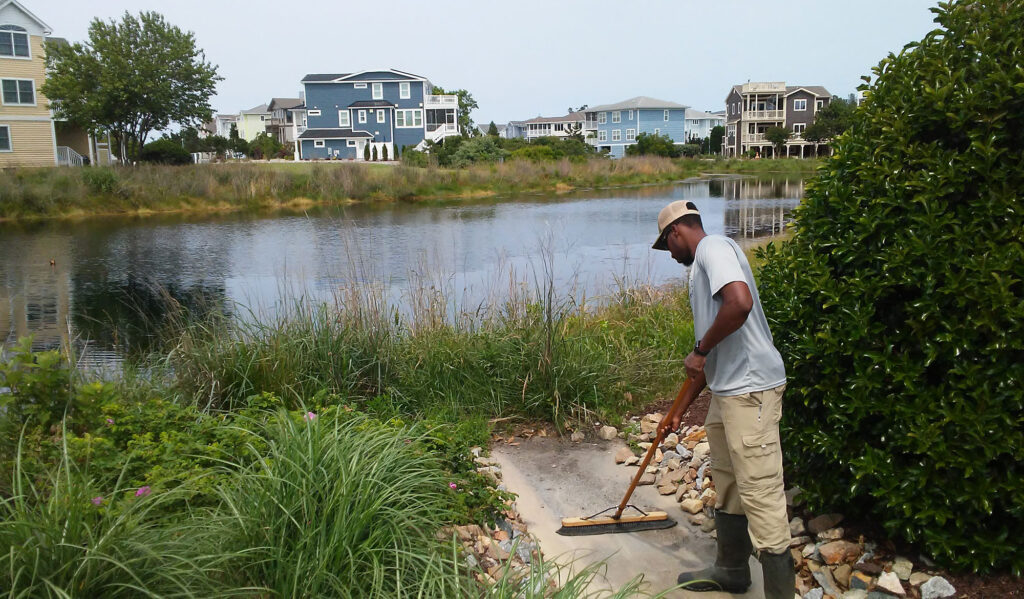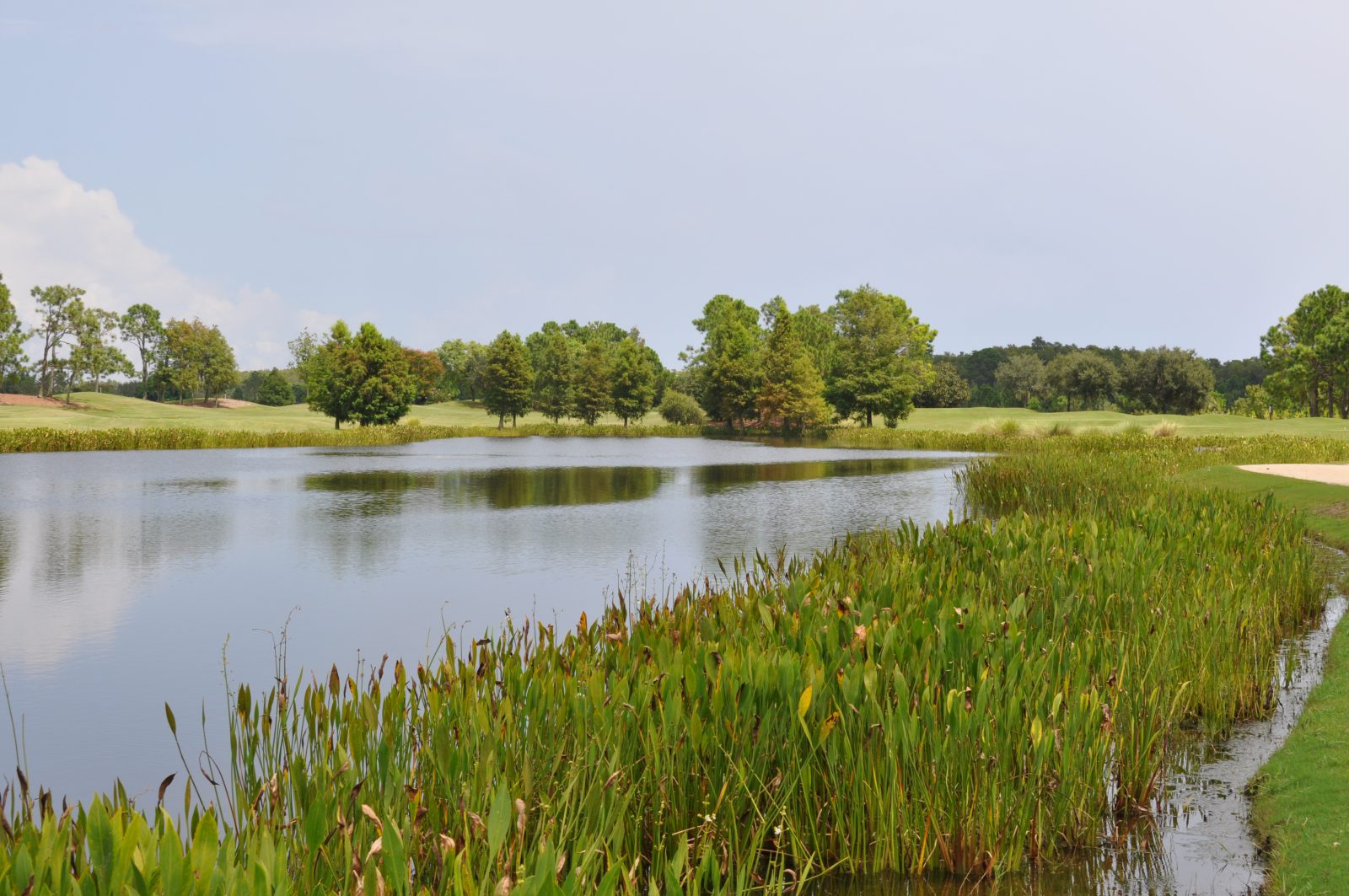
Prevent Shoreline Erosion and Filter Nutrients with Stormwater Management Facilities
As stormwater runoff flows through our storm drains and properties and into our lakes, ponds and regional waterways, it picks up nitrogen and phosphorus-rich nutrients from soils, fertilizers, pesticides, pollution and animal waste, causing eutrophication and diminishing the overall water quality in our watershed. Lakes and ponds overloaded with nutrients have a much greater possibility of battling recurring nuisance algae and aquatic weed issues and ultimately filling in with unwanted sediment, creating the need for premature and costly dredging.
Utilizing “green” technologies and infrastructure that mimic Mother Nature to help with watershed management and clean up nutrient-rich stormwater, before it gets into your lakes and ponds, is on the rise due to increasing pressures from state-mandated regulations to manage stormwater on a community level. Rain gardens, bioswales and beneficial vegetative buffers are all recommended approaches to help fix and prevent erosion and limit nutrients from reaching our lakes and ponds. Floating islands ultimately help capture excess nutrients that do manage to reach our waterbodies.
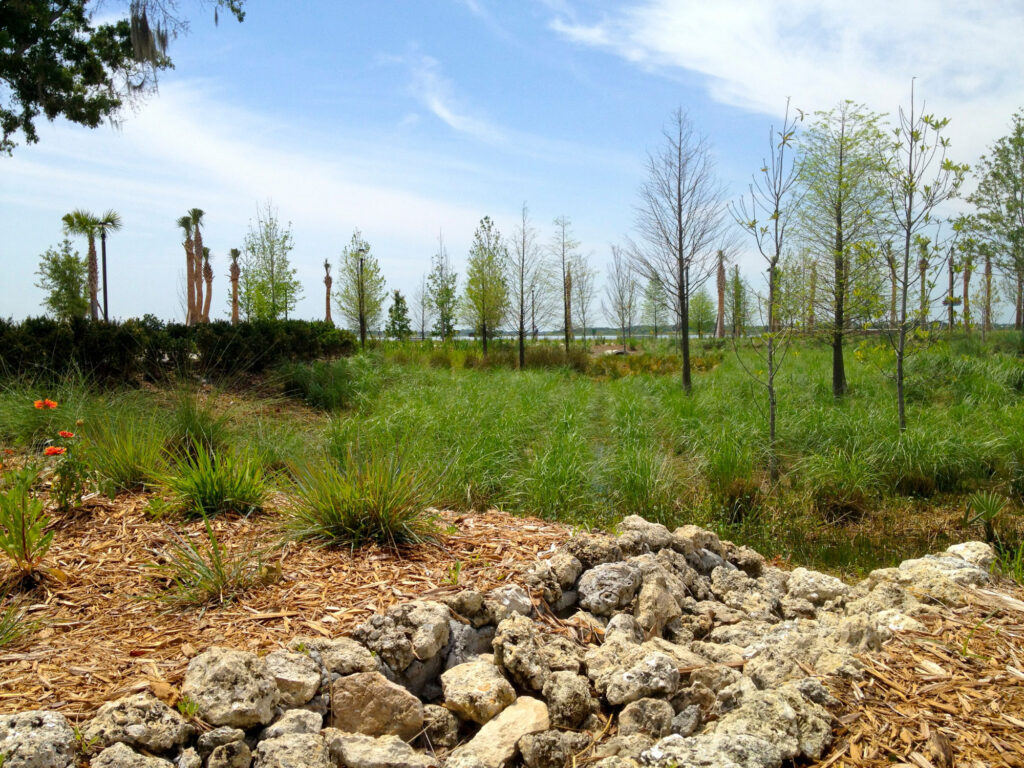
Rain Gardens
Rain gardens first began to gain prominence in the 90’s as a means, in some cases, for developers to replace or reduce the size of traditional best-management practices for retaining and renovating stormwater. Rain gardens typically consist of native plants, loose soil and mulch. Rain gardens are placed on natural slopes, shallow depressions, sometimes near downspouts and between impermeable surfaces (i.e., parking lots, driveways, roofs) and run-off destinations (i.e., storm drains, lakes, ponds and streams). Their purpose is to filter stormwater run-off from impermeable surfaces before the runoff can reach our waterways. A rain garden remains dry a majority of the year and only in rain events will a rain garden hold water for a brief period of time. They are a wonderful source of habitat for birds, butterflies and all sorts of fascinating insects.
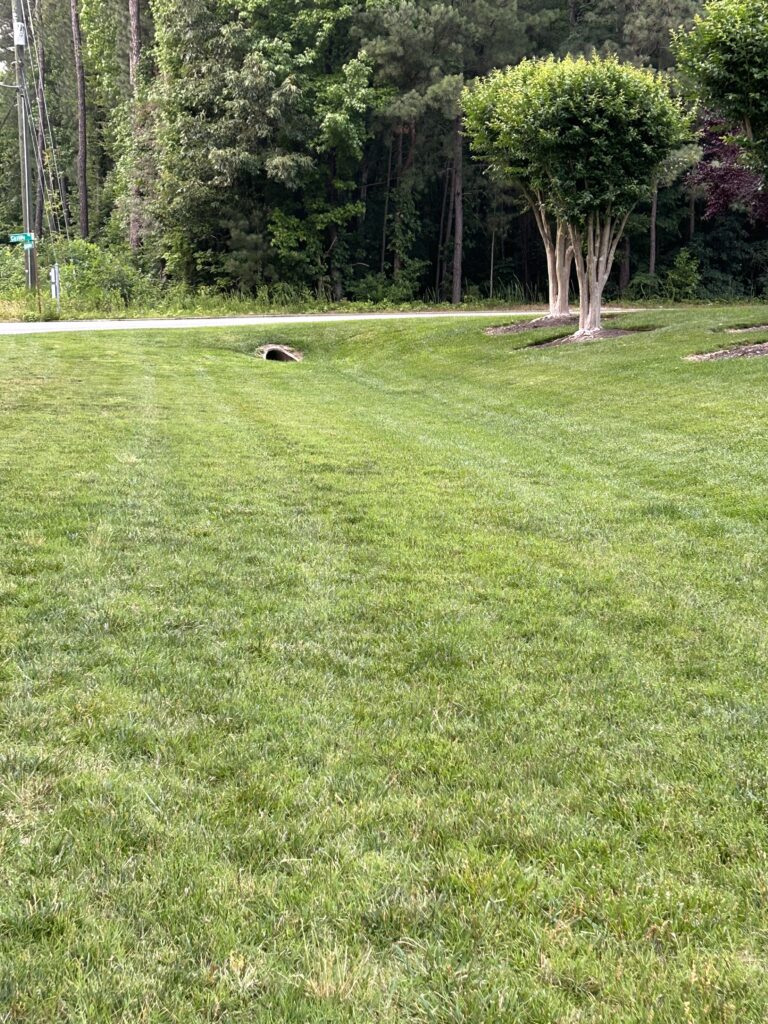
Bio Swales
Bioswales are another landscape element designed to stabilize and remove nutrients and pollution from surface runoff water. They consist of a swaled drainage course with gently sloped sides and are typically filled with heartier grasses, vegetation and compost. The water’s flow path, along with the wide and shallow ditch, is designed to maximize the time water spends in the swale, which aids in the trapping of nutrients and pollutants. Depending on the land available, a bioswale may take on many lengths, shapes, and overall sizes. It is common to see them around parking lots and in sloped areas throughout communities.
Vegetative Pond Buffer
Maintaining dense beneficial vegetation around your lake or pond is extremely beneficial for improving water quality by preventing erosion and limiting nutrients from entering your lake or pond at the site. This area is commonly referred to as a buffer zone and it is recommended that your landscape company leave a 3-5 foot section above the water level un-mowed, so that it can grow and benefit the pond. Although a short manicured buffer may look aesthetically appealing, the cultural practice that is the healthiest for lakes and ponds is to allow the native grasses and other beneficial flowering species to grow to maturity, while selectively controlling the non-beneficial and unsightly species that may also grow in these areas if left completely unmaintained. Learn more about recommended types of beneficial vegetation species to plant in and around your lake or pond.
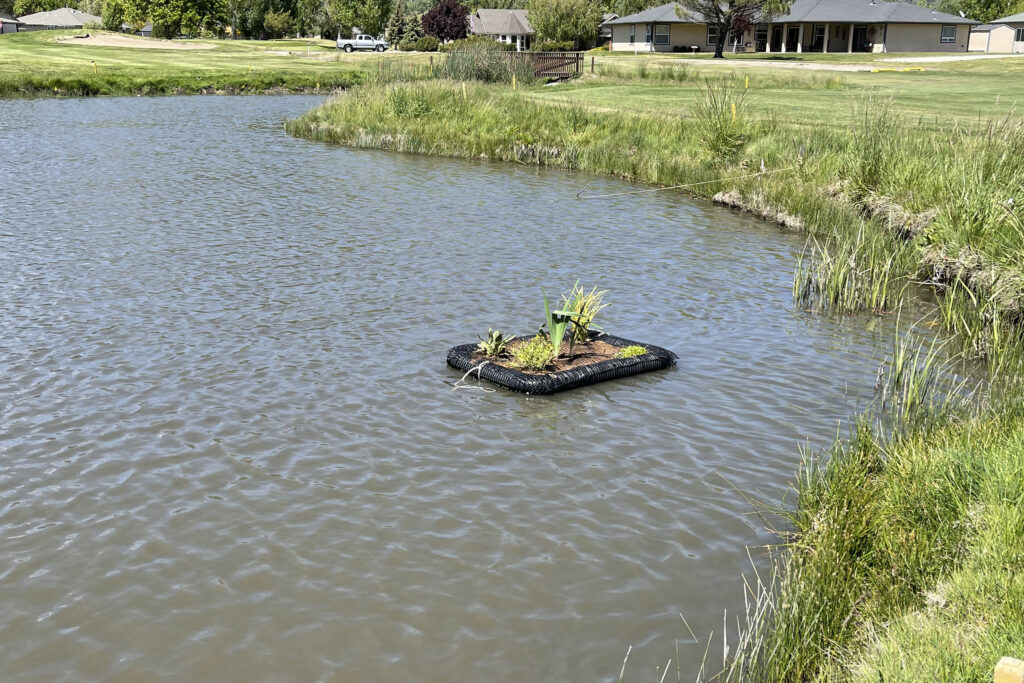
Floating Islands
Floating islands or floating gardens are designed to help absorb nutrients that indeed reach the waterbody. Beneficial vegetation can be added to naturally eroding islands that already exist in some lakes or ponds. Manmade floating islands, consisting of an artificial mat with plugs of native vegetative plants, can be designed and added to any waterbody to mimic nature in the water. Floating islands naturally attract microbes which help cleanse the water and remove unwanted nutrients. Overall, these additions to your lake or pond will help improve water quality, including reducing phosphorus and nitrogen levels, and will act as a buffer against many water quality problems.
Enhance Your Community & Waterbody with Stormwater Management
To learn how your community and surrounding watershed can benefit from nature-mimicking cultural improvements such as rain gardens, bioswales, beneficial buffers and floating islands, to help reduce nutrient loads and improve water quality, contact your local lake and pond management professional. A plan can be customized specifically for your property, using a variety of recommended native plants and vegetation. Once implemented, you will improve your water quality while also improving wildlife habitat, beautifying your community, and making a positive impact on our environment.








